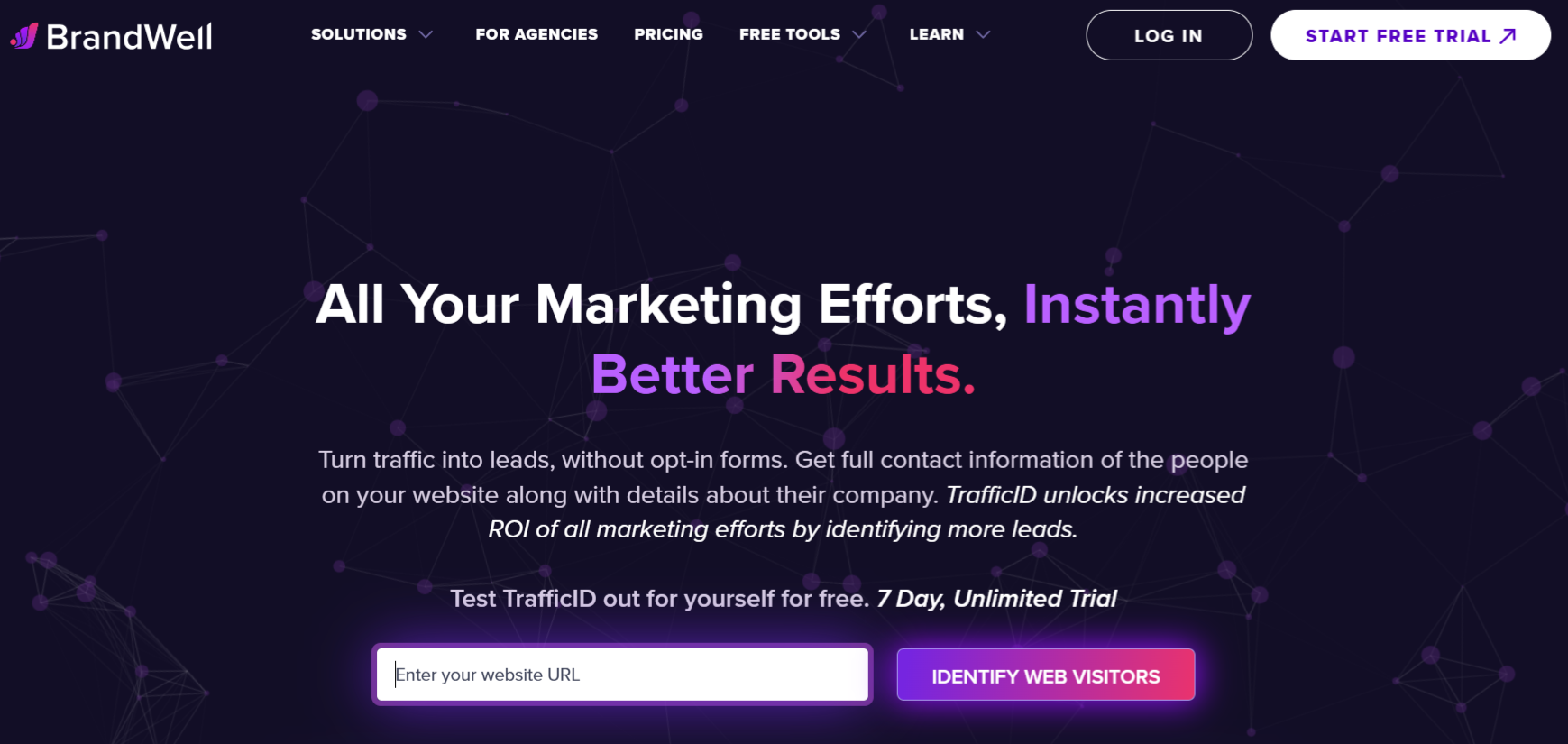Discover top guides, trends, tips and expertise from AIO Writers
Ultimate Guide to Newsletter Marketing for Ecommerce Brands
Jeff Joyce
Wednesday, 12th Mar 2025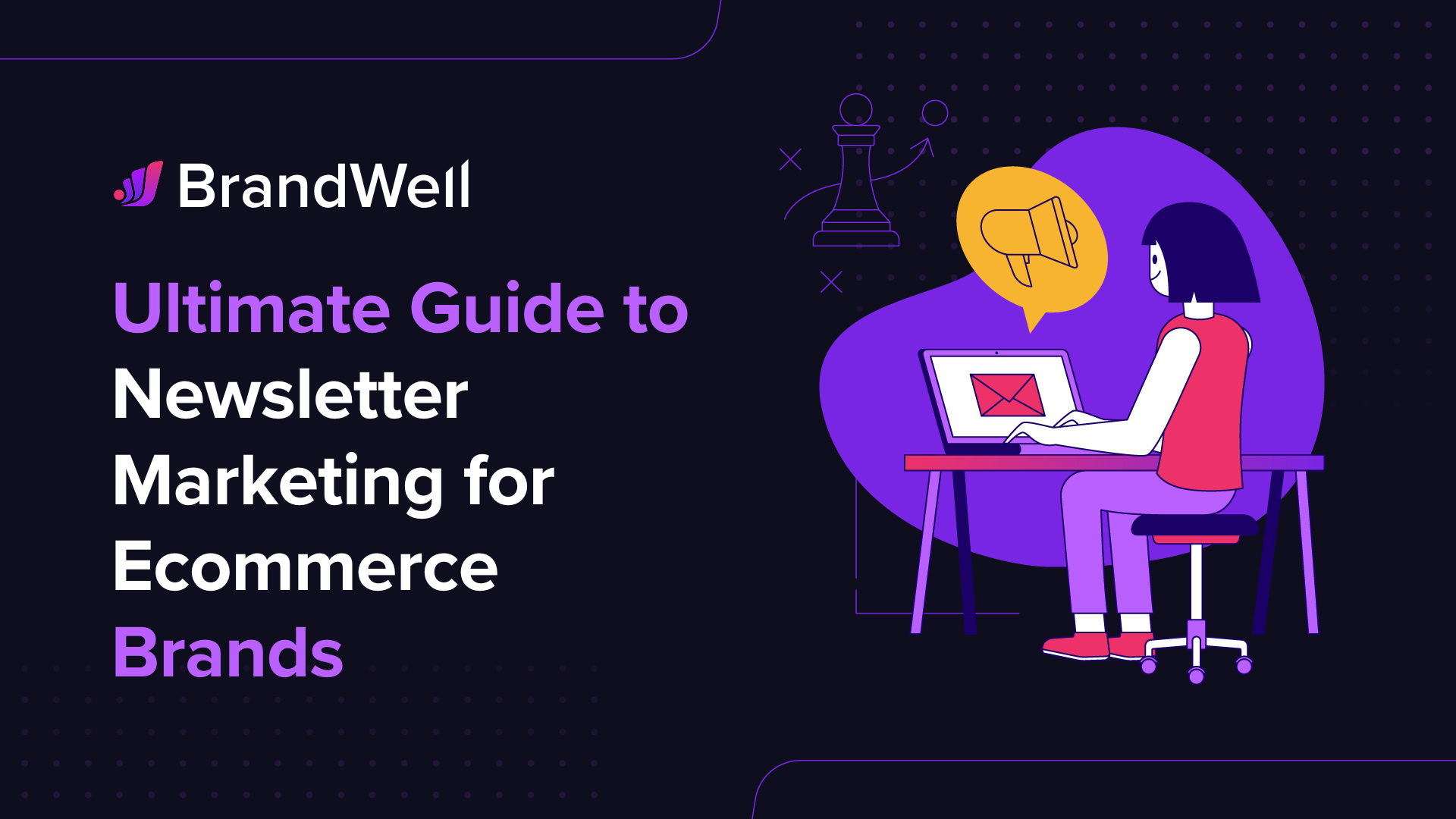
Your store is getting visitors, but most leave without buying.
And the ones who do? They might never return.
Social media algorithms are unpredictable, ads are getting more expensive, and you’re stuck wondering how to turn one-time buyers into loyal customers.
The truth is, without a way to consistently engage customers, you’re leaving money on the table. And relying solely on social media or paid ads is risky — your audience can disappear overnight with a single algorithm change.
Enter newsletter marketing — your direct line to customers.
A well-crafted email keeps your brand top-of-mind, builds trust, and nudges subscribers toward repeat purchases.
The best part? You own your email list.
No middleman, no unpredictable algorithms — just a proven way to drive sales and build customer loyalty.
Newsletters have been around for ages, and to the millennial marketer, they may sound like outdated artifacts that belong to the last century. But for many brands, newsletters are still a valuable option for reaching customers.
This is why 31% of B2B marketers continue to send email newsletters to nurture their leads.
In this guide, I’ll walk you through how to create, optimize, and grow your e-commerce newsletter to keep customers engaged and boost revenue.
Ready? Let’s dive in!
What is Newsletter Marketing?
Newsletter marketing is the art of using email to connect with your customers — whether to promote new products, share exclusive deals, or simply keep your brand top-of-mind.
Unlike social media or paid ads, where algorithms control visibility, email lets you communicate directly with your audience, right in their inbox.
Why Your E-commerce Store Needs a Newsletter (Like, Yesterday)
Running an online store isn’t just about getting traffic — it’s about keeping customers engaged and turning them into repeat buyers.
A well-crafted newsletter helps you:
✔ Stay in touch with potential and existing customers.
✔ Nurture relationships by providing value beyond just sales pitches.
✔ Bring shoppers back when they’re ready to buy.
Without an email strategy, you’re relying on platforms you don’t control (like social media) to reach your audience.
So, why should every e-commerce business invest in newsletter marketing? Here’s what you stand to gain:
✔ Increased Sales – Promote new products, flash sales, and exclusive discounts straight to your customers.
✔ Customer Retention – Keep buyers engaged long after their first purchase, increasing lifetime value.
✔ Brand Loyalty – Regular, valuable emails create trust, making customers more likely to choose you over competitors.
In short, an effective newsletter is more than just a marketing tool — it’s your secret weapon for long-term e-commerce success.
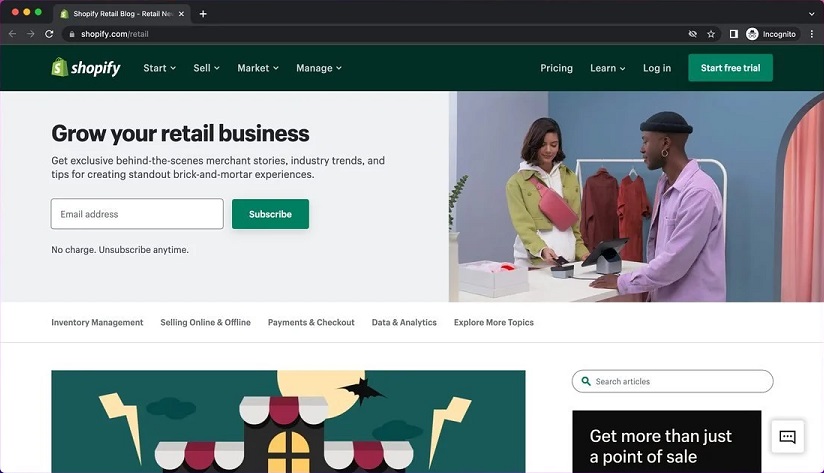
The Shopify newsletter is one of the best newsletters that every entrepreneur should subscribe to.
Now that you know why newsletter marketing is a must for your e-commerce business, it’s time to talk about the foundation of every successful email strategy: understanding your audience.
Know Your Audience
Even the best-crafted emails won’t drive results if they’re not speaking to the right people in the right way.
Define Your Ideal Customer Persona
Before you hit “send” on any email, you need to know who you’re talking to. Ask yourself:
Who is my target customer? (Age, interests, shopping behavior)
What problems do they need to solve?
Why would they subscribe to my emails? (Exclusive deals, useful content, new product drops)
For example, if you sell eco-friendly beauty products, your audience might care about sustainability, ethical sourcing, and skincare tips. Tailoring your emails to these interests makes them more engaging and valuable.
Here’s a template of an ideal customer persona from Venngage:
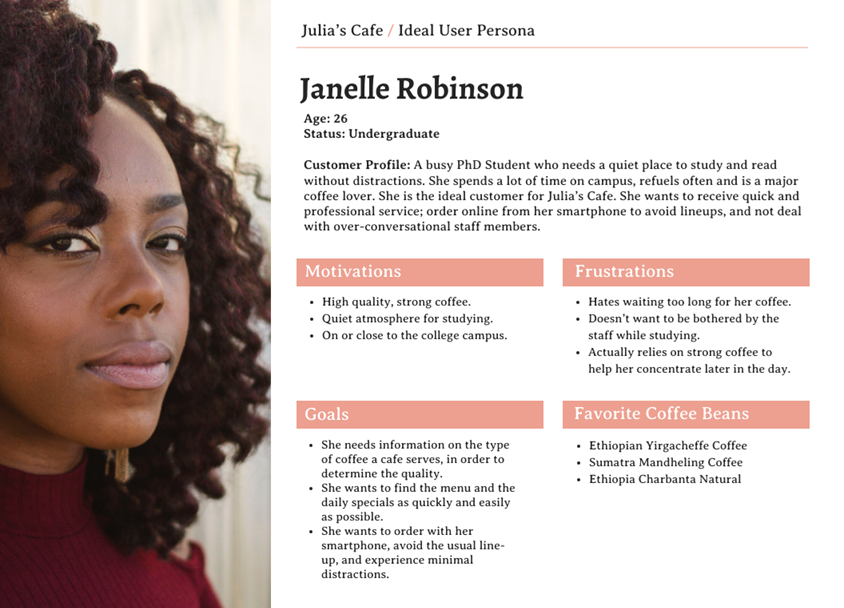
Segment Your Email List for Personalization
Not all subscribers are the same. Some are first-time visitors, while others are loyal customers. Segmenting your email list ensures that the right message reaches the right people.
Here are some powerful ways to segment your audience:
- New Subscribers – Welcome them with a special offer or an introduction to your brand.
- Past Customers – Send exclusive deals or personalized product recommendations.
- Cart Abandoners – Remind them what they left behind (and maybe offer a discount).
- VIP Customers – Reward your top spenders with early access to sales or special perks.
Batch-and-blast email marketing is a thing of the past. Studies show that personalized emails deliver 6x higher transaction rates, 29% higher open rates, and 41% higher click-through rates.
To understand customer behavior, pay attention to:
- Open Rates – Are people opening your emails? If not, your subject lines might need work.
- Click-Through Rates – Are subscribers engaging with your content? If not, tweak your messaging or design.
- Purchase History – What products do they buy? Use this to send tailored recommendations.
By analyzing and optimizing based on these insights, you’ll refine your approach and send emails that actually drive sales.
Setting Up Your E-commerce Newsletter
Now that you know your audience, it’s time to set up your e-commerce newsletter for success.
Whether you’re starting from scratch or improving your existing emails, getting the right tools and workflows in place will save you time and maximize results.
Choose the Right Email Marketing Platform
Your email marketing platform is the backbone of your newsletter strategy. The best platforms for e-commerce integrate seamlessly with your store and offer automation, segmentation, and analytics.
Here are some top choices:
- Klaviyo – Built for ecommerce, with deep Shopify and WooCommerce integration.
- Mailchimp – User-friendly with solid automation features.
- Omnisend – Advanced automation, SMS marketing, and smart segmentation.
- ActiveCampaign – Great for personalized customer journeys.
When choosing a platform, consider pricing, ease of use, and how well it integrates with your store.
Ensure Compliance with Email Marketing Regulations
Nobody likes spam (and neither do email providers). To keep your emails compliant and out of the junk folder:
✔ Get Permission – Use opt-in forms, and never buy email lists.
✔ Include an Unsubscribe Link – It’s legally required and keeps your list clean.
✔ Follow GDPR, CAN-SPAM, & Other Regulations – Depending on your audience location, ensure you meet legal requirements.
Once you’ve chosen a platform and automation is in place, it’s time to focus on creating engaging, high-converting emails.
How to Create High-Converting Newsletter Content
Now that your e-commerce newsletter is set up, it’s time to focus on the most important part: crafting emails that grab attention, drive clicks, and boost sales.
The right content can turn casual subscribers into loyal customers — but boring, sales-y emails? Those go straight to the spam folder.
Your newsletter — no matter how short or how long — should provide useful information or entertaining stories that your subscribers would want to read.
You could share product reviews, market trends, how-to tutorials, exclusive discounts, or even customer success stories. Make sure each piece of content is engaging enough that readers will want to continue reading until the end of the email.
Start With Irresistible Subject Lines
Your email won’t get opened if the subject line doesn’t grab attention. Some proven strategies:
✔ Use curiosity – “You’re missing out on something BIG…”
✔ Personalize it – “John, here’s a special deal just for you!”
✔ Create urgency – “Only 12 hours left to claim your 20% off”
✔ Keep it short & clear – “Your cart is waiting 🛒”
Test different subject lines (A/B testing) to see what works best for your audience.
Discover tips on how to write email subject lines that convert.
Write Concise Copy
So you got your recipient to open your email. To keep their attention focused on your message, make sure your email copy is enjoyable to read.
✔ Make your point in the first few paragraphs.
✔ Keep the language simple and easy to read.
✔ Not everyone has all day to read through lengthy articles so aim for 500 words per article.
✔ Bullet points are great for creating white space.
✔ Avoid “word salads” that are difficult for readers to digest.
✔ Speak like your audience by using their words and phrases.
Don’t forget why customers should be interested in what you have to offer. Remind them how your product solves their problems so they can be motivated to take steps towards purchase or engagement.

The Moz Top 10 is one of the most cited when it comes to the best newsletter copies
Best Practices for Email Design & Layout
Getting people to read your newsletter can be a challenge. Only 19% of people read the content of an email newsletter. The rest simply skim through and bounce if they don’t find your stuff interesting.
This is why visuals have become a very important part of email marketing. Think about what kind of message you want to convey and how best to communicate it visually – this could mean using bold fonts or adding infographics.
A well-designed email is easy to read, visually appealing, and mobile-friendly. Here’s how to structure your emails for success:
✔ Keep it simple – Too much text or too many images = overwhelm.
✔ Use high-quality visuals – Product images should be clear, professional, and enticing.
✔ Make your CTA stand out – “Shop Now,” “Claim Your Discount,” or “Browse Bestsellers” should be clear and clickable.
✔ Optimize for mobile – Up to 78% of emails are opened on phones, so your design should look great on small screens.
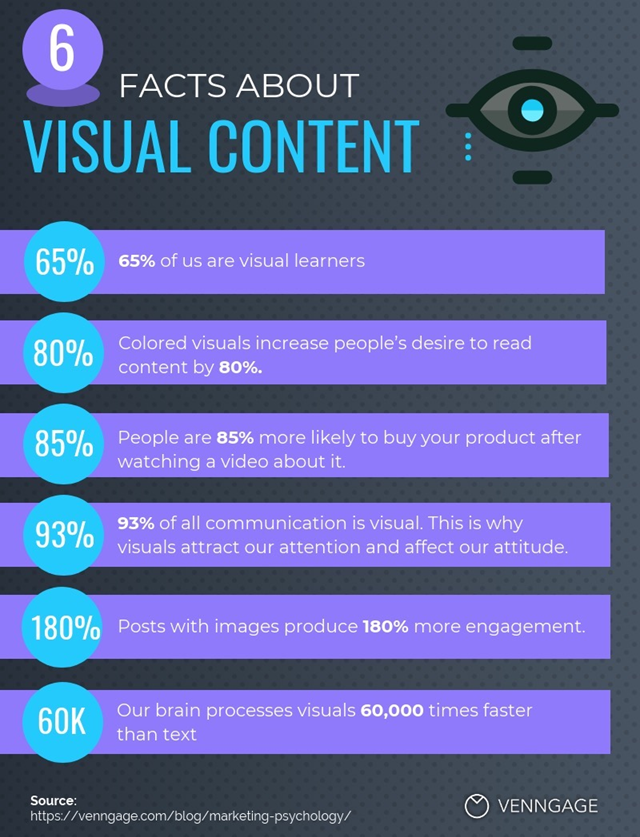
Still not invested in visual content? Look at these numbers from Venngage.
Add a Compelling CTA
The call-to-action provides readers with a direct path to take action, whether it be subscribing to an email list, downloading a free ebook, or making a purchase. When used correctly, CTAs can drastically increase conversions.
✔ Use countdown timers in CTAs to create urgency, especially for limited-time offers with expiration dates.
✔ Countdown timers boost motivation, encouraging customers to act quickly before the deal expires.
✔ Ensure your CTA is clear about the action you want readers to take and why they should act immediately.
✔ Use urgency-driven phrases like “Act now” or “Get your free ebook today” to prompt immediate action.

This creative CTA found its way to Brevo’s list of 12 best email call-to-action examples
Personalization & Dynamic Content
Generic emails don’t sell — personalized ones do. Use customer data to make emails feel tailor-made:
✔ Insert first names – Address them by their first name, like “Hey Sarah, check out our new arrivals!”
✔ Show past purchases – “Loved your last order? You might like these…”
✔ Send location-based deals – “It’s cold in New York! Stay warm with 20% off coats.”
💡Pro Tip: Want to take personalization even further? A tool like TrafficID can help you track visitor behavior and customer preferences in real time, so you can send hyper-targeted emails that actually resonate. Instead of guessing what your subscribers want, TrafficID gives you the data to deliver the right message at the perfect time, increasing clicks, conversions, and customer loyalty.
Here’s an example of a TrafficID lead profile:
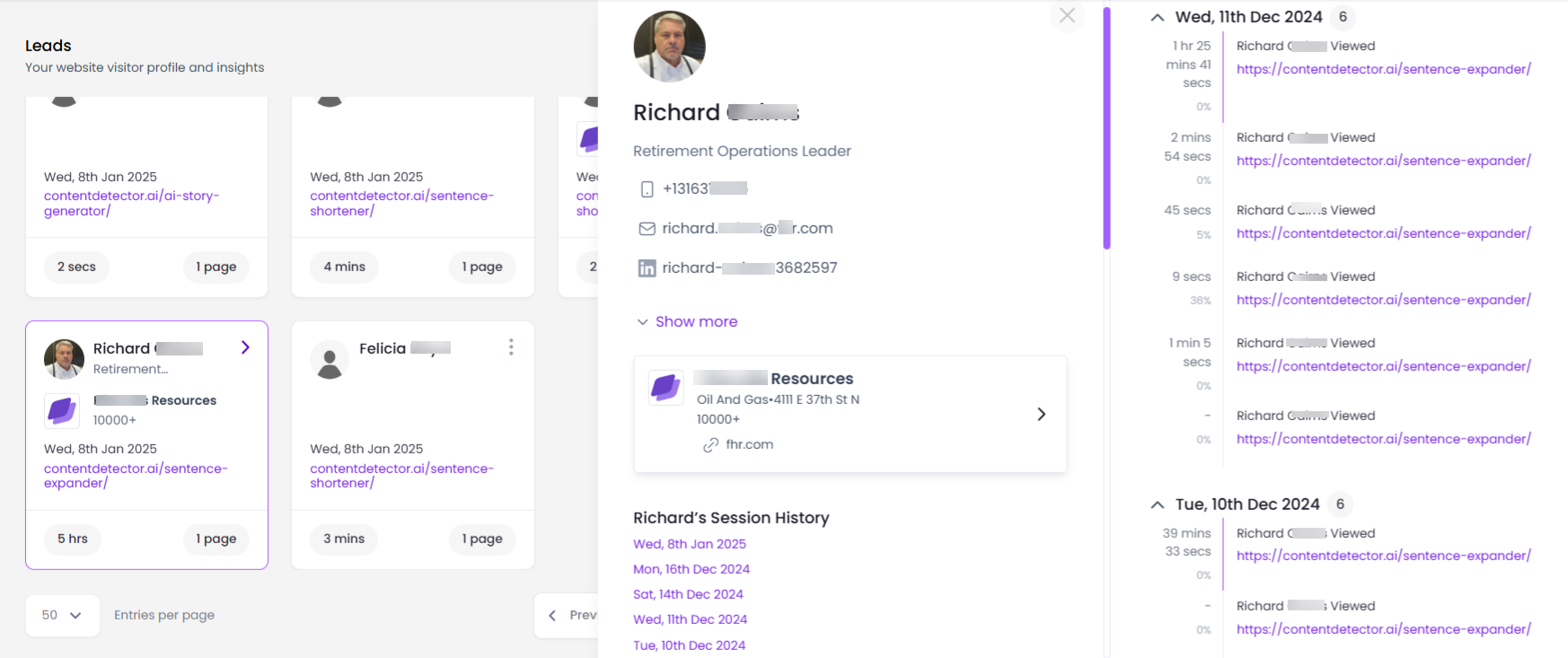
From these insights, we can easily figure out which audience segment our visitor Richard belongs to (repeat customer), and then personalize our newsletter based on his pain point (improving thin content) and the product/page (content detector sentence expander) that interests him the most.
Check out this step-by-step guide on how to use TrafficID lead data to create effective email campaigns.
Studies have shown that people respond better when emails end with a sign-off from a particular person in the company rather than just the company name itself — so take advantage of this opportunity. You can easily personalize an email sender by adding a signature line that includes your name and contact details.
Promote Your Newsletter on Social Media
Social media is a powerful tool for promoting your e-commerce newsletter. It helps you reach new audiences, engage with potential customers, and strengthen relationships with existing ones.
Here’s how to effectively use social media to bring more eyes to your newsletter:
- Create engaging posts – Share social media content that sparks interest and encourages clicks. Focus on industry-related topics that provide value and make people want to subscribe.
- Use relevant hashtags – Hashtags help new users discover your content, increasing your visibility in search results and expanding your reach.
- Incorporate visual content – Posts with images, videos, and infographics grab more attention than text alone. Try showcasing products, creating tutorial videos, or designing eye-catching graphics.
- Cross-promote across platforms – Share your newsletter signup link across different social channels to reach multiple audiences at once.
- Leverage paid advertising – Use tools like Facebook Ads Manager to target specific demographics and expand beyond your organic reach. A mix of organic and paid strategies can maximize your impact.
By consistently promoting your newsletter on social media, you’ll increase visibility, build brand recognition, and grow your business faster.
Growing Your Email List
You can have the best email content in the world, but if your list is small (or filled with unengaged subscribers), it won’t do much for your e-commerce business.
The key to successful newsletter marketing is consistently attracting high-quality subscribers who actually want to hear from you.
Here’s how to grow your email list without resorting to spammy tactics or buying low-quality email lists (which, by the way, is a huge no-no!).
Optimize Your Signup Forms
Your email list starts with a strong signup form. Here’s how to make it irresistible:
✔ Keep it short – Only ask for essential details (like name and email).
✔ Use compelling copy – “Get exclusive discounts & early access to sales!” sounds way better than “Sign up for our newsletter.”
✔ Make it visually appealing – A clean, eye-catching banner grabs attention.
✔ Place it strategically – Position signup forms where visitors are most engaged, like:
- Your homepage (above the fold)
- Product pages
- Blog posts
- Checkout pages
- Exit-intent popups
Let’s look at TrafficID’s signup form: it’s located right above the fold, has only three words, stands out visually, and immediately delivers value.
Offer an Irresistible Incentive (Lead Magnet)
People won’t sign up for just another newsletter. Give them a reason to subscribe by offering something valuable in exchange for their email.
Some effective lead magnet ideas:
- Discount Codes – “Sign up & get 10% off your first order!”
- Exclusive Content – “Download our ultimate skincare guide for free!”
- Early Access – “Be the first to shop our new arrivals.”
- Giveaways & Contests – “Enter to win a $50 gift card—just drop your email!”
Make sure your lead magnet aligns with your brand and audience for maximum impact.
Get Social & Try Paid Ads
Your existing followers on social media are already interested in your brand so why not turn them into subscribers?
- Instagram & Facebook – Use Stories, pinned posts, and bio links to promote your newsletter.
- TikTok & YouTube – Add CTAs in video descriptions or direct viewers to a landing page.
- Google Ads & Facebook Ads – Run targeted ads offering an exclusive lead magnet to capture new subscribers.
Turn Customers into Subscribers
Don’t miss the opportunity to convert shoppers into lifelong subscribers! Here’s how:
- Opt-in at Checkout – Add a checkbox for customers to subscribe when they place an order.
- Post-Purchase Emails – After a sale, invite them to join your VIP email list for future discounts.
- Customer Accounts – Offer perks (like order tracking or rewards) for subscribers who create an account.
Host Giveaways & Collaborations
Want a quick surge of new subscribers? Run a giveaway! Collaborate with influencers or brands in your niche to expand your reach.
Example: “Win a $100 shopping spree! Enter by signing up for our newsletter. Bonus entry: Tag a friend!”
Optimizing Email Deliverability & Open Rates
Growing your email list is great, but it won’t matter if your emails aren’t getting delivered or opened.
Poor email deliverability means your emails land in the spam folder, while low open rates mean subscribers aren’t even seeing your content.
Let’s fix that! Here’s how to ensure your emails reach inboxes and actually get read.
1. Maintain a Clean & Engaged Email List
Email providers like Gmail and Yahoo look at engagement to decide if your emails belong in the inbox or spam. To boost your sender reputation:
- Regularly remove inactive subscribers – If they haven’t opened your emails in 6+ months, send a re-engagement campaign. If they don’t respond, remove them.
- Use double opt-in – This ensures only real, interested people join your list.
- Segment your list – Send targeted emails based on purchase history, engagement, or preferences instead of blasting everyone with the same content.
2. Avoid Spam Triggers & Stay Compliant
Spam filters are strict — avoid common mistakes that can land your emails in junk folders:
🚫 Don’t use spammy words – Avoid phrases like “100% FREE,” “Make money fast,” or “Urgent!!!” in subject lines.
👍 Authenticate your domain – Set up SPF, DKIM, and DMARC to prove you’re a legit sender (your email provider can help with this).
📩 Use a professional email address – Emails from “info@yourstore.com” perform better than “yourstore@gmail.com.”
⚖️ Follow email regulations – Ensure your emails comply with CAN-SPAM, GDPR, and other regulations.
For more information about email marketing laws around the world, read this guide from the U.S. Chamber of Commerce.
3. Perfect Your Send Timing & Frequency
When you send emails matters just as much as what you send.
Best days to send a newsletter email: Tuesdays, Wednesdays, and Thursdays generally get the highest engagement.
Best times to send: 8-10 AM and 4-6 PM tend to perform well but test different times to find what works best for your audience.
How often? 1-3 emails per week is a good balance — too few, and people forget about you; too many, and they get annoyed and unsubscribe.
4. Optimize for Mobile Users
As I earlier mentioned, over 70% of emails are opened on mobile devices. If your email isn’t mobile-friendly, you’re losing potential sales.
How do you make emails easy to read on the go?
✔ Use a responsive email design – Your email should look great on any screen size.
✔ Buttons should be big & tappable – Make CTAs easy to click with your thumb.
✔ Use short paragraphs & bullet points – Nobody likes reading walls of text on their phone.
Here’s another example from Brevo:

5. Monitor & Improve Your Email Performance
Tracking your email performance helps you understand what’s working — and what needs improvement. Keep an eye on your:
- Open Rates – Are people opening your emails? If not, improve your subject lines.
- Click-Through Rate (CTR) – Are they clicking links? If not, make your value clearer.
- Conversion Rate – Are they buying? If not, test different offers or landing pages.
- Bounce Rate – High bounce rates could mean your email list needs cleaning.
Now that your emails are getting delivered and opened, it’s time to automate your email marketing for maximum efficiency.
Using Automation & AI for Ecommerce Emails
Manually sending every email isn’t just time-consuming — it’s inefficient. The best ecommerce brands automate their email marketing to engage customers at the right moment without lifting a finger.
With AI and automation, you can send highly relevant, personalized emails 24/7, ensuring that no potential sale slips through the cracks.
1. What Can You Automate?
Want to make more sales while you sleep? Set up these must-have automated email flows:
- Welcome Email Series – Automatically greet new subscribers, introduce your brand, and offer a first-time discount.
- Abandoned Cart Emails – Remind shoppers to complete their purchase (with a gentle nudge like “Your cart is waiting!”) and offer an incentive.
- Order Confirmation & Shipping Updates – Keep customers informed and excited.
- Post-Purchase Emails – Thank customers, offer upsells, and ask for reviews to keep them engaged.
- Loyalty & Rewards Emails – Send exclusive perks to repeat customers to boost retention.
- Re-engagement Emails – Win back inactive subscribers with a special offer or product recommendations.
2. Personalization with AI
AI-powered tools help create hyper-personalized email experiences based on customer behavior, preferences, and past purchases.
Instead of generic email blasts, you can:
✔ Recommend products based on past purchases (“Loved your last order? You might like these…”)
✔ Send dynamic content that changes based on browsing history (e.g., featuring the category they viewed most)
✔ Adjust send times for each subscriber based on when they’re most likely to open emails
TrafficID, which I mentioned earlier, can help track what visitors do while they’re on your website, allowing you to send even more targeted and timely email campaigns.
In the screenshot below, you can see which pages this particular visitor, Susan, viewed on the BrandWell website and how long she stayed. You can also see how many times she came back in December. On top of that, TrafficID shows you her company role, email, and LinkedIn accounts – making it easy to personalize your outreach.
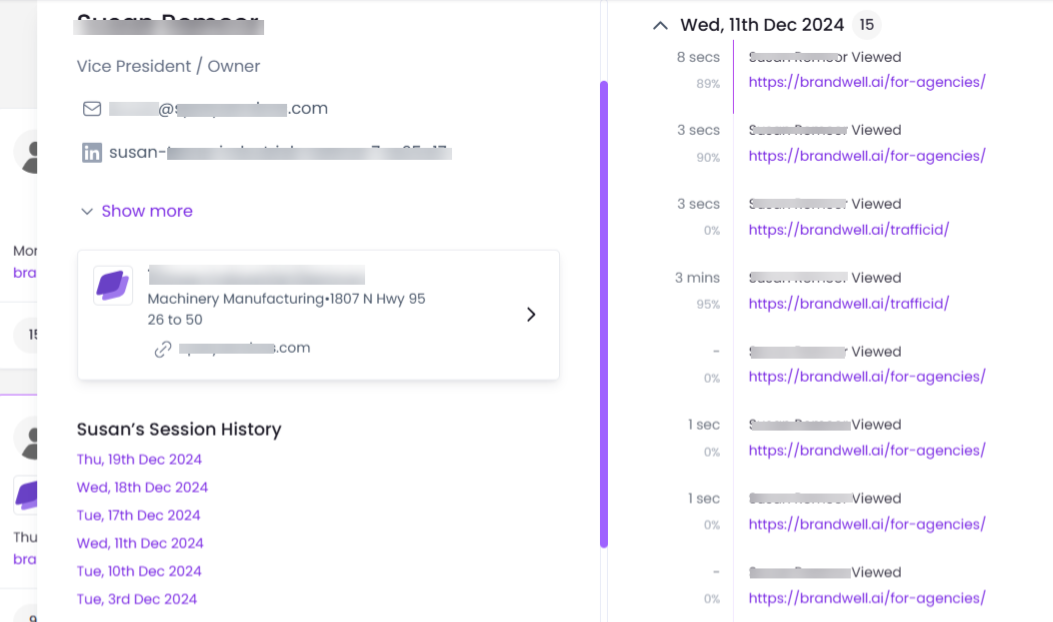
3. AI-Powered Email Writing
Creating engaging email content regularly can be a challenge — especially if you’re juggling multiple campaigns. That’s where AI-powered writing tools like BrandWell come in.
With BrandWell, you can:
✔ Generate compelling email copy in minutes, saving hours of manual work
✔ Optimize subject lines & CTAs for better engagement
✔ Create personalized, high-converting emails at scale
Watch how I created a full email newsletter in minutes with BrandWell:
And here’s how BrandWell can help you write emails in bulk:
Whether you need a quick welcome email, a product launch announcement, or a seasonal promotion, AI tools like BrandWell can help you craft effective emails effortlessly.
4. How to Set Up Email Automation
Setting up an automated email workflow is easier than you think. Here’s a simple process:
1️⃣ Choose an email marketing platform.
2️⃣ Define triggers (e.g., when someone signs up, abandons a cart, or makes a purchase).
3️⃣ Create personalized email sequences using AI-powered tools.
4️⃣ Test & optimize your emails to maximize engagement and conversions.
Common Mistakes & How to Avoid Them
Even the best email marketing strategies can flop if you make unavoidable mistakes.
Many e-commerce brands lose sales and subscribers and even get flagged as spam because of simple missteps.
Let’s break down the most common email marketing mistakes — and how to fix them.
1. Sending Emails Without a Clear Goal
To stick to a schedule, sometimes marketers send emails just for the sake of it — without a clear purpose.
Every email should have a specific goal, whether it’s driving sales, re-engaging customers, or promoting new arrivals.
Before hitting send, ask yourself: What action do I want subscribers to take?
2. Overloading Subscribers with Too Many Emails
Bombarding your list with daily emails can burn out your audience.
Stick to a consistent, strategic schedule (1-3 emails per week is a good balance).
Monitor unsubscribe rates — if they spike, you might be overdoing it.
3. Neglecting Mobile Optimization
If you’re designing emails on your desktop — and they do look good on your computer — it’s easy to forget to optimize them for a smaller screen.
Choose a design tool that offers responsive email templates.
Remember: keep paragraphs short and make CTA buttons big enough to tap easily.
And always, always test before you send!
4. Using Generic, Boring Subject Lines
If you’re juggling multiple clients and have to write hundreds of emails weekly, it can be difficult to make each one of them unique.
Sometimes, all you can squeeze out of your brain is a vague or dull subject line like “Our Weekly Newsletter” or “Update from Us.”
If you’re suffering from writer’s block, AI can help!
Let’s look at a few examples of email subject lines written by BrandWell:
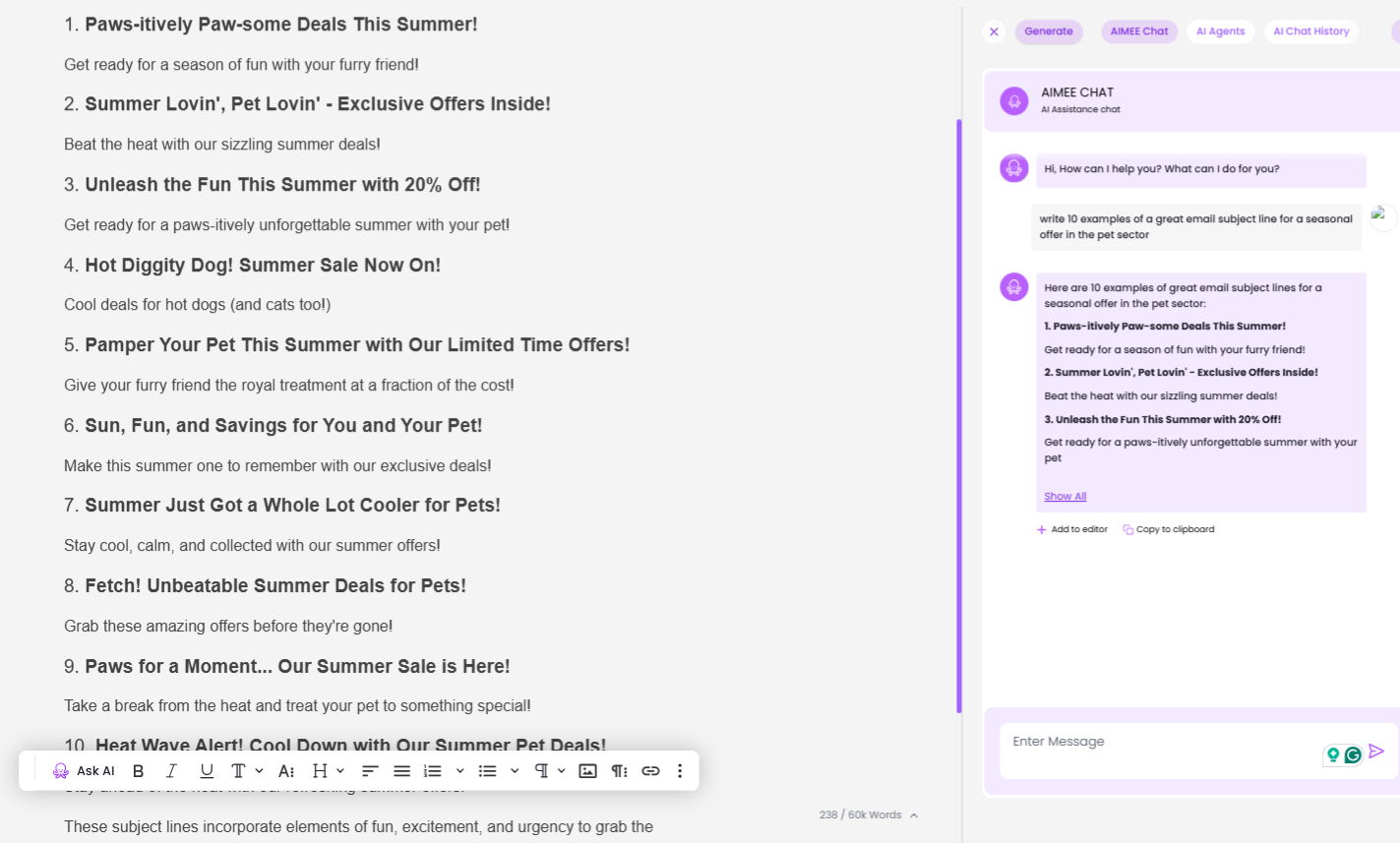
5. Ignoring Personalization
Similar to the mistake above, sending one-size-fits-all email blasts just doesn’t cut it.
Use customer names, segment your list, dig into customer behavioral insights (using TrafficID of course!), and recommend products based on browsing history.
6. No Clear Call-to-Action (CTA)
Sending emails without a clear next step can leave subscribers confused about what to do.
Make sure each email has one clear CTA, like:
“Shop Now”
“Claim Your Discount”
“Book an Appointment”
“Get a Free Quote”
A confused subscriber won’t take action — so make it obvious what they should do next!
Future Trends in E-commerce Newsletter Marketing
Email marketing is constantly evolving, and staying ahead of the curve is key to keeping your audience engaged and driving more sales.
As technology advances, AI, automation, and personalization are shaping the future of e-commerce newsletters. Let’s look at the biggest trends you need to watch — and start implementing.
1. Hyper-Personalization with AI & First-Party Data
Customers expect highly relevant content, and generic email blasts are becoming obsolete.
AI and first-party data (collected directly from your website) will power:
- Behavior-based product recommendations (e.g., “You recently viewed this—want 10% off?”)
- Dynamic email content that changes based on browsing habits
- Smart send times tailored to when each subscriber is most active
Tools like TrafficID can help track user behavior, making your personalization even more precise.
2. AI-Generated Content & Automated Copywriting
Writing compelling emails at scale is tough — but AI is making it effortless. In the future, AI-powered tools will:
✔ Generate high-converting email copy in seconds
✔ Test & optimize subject lines for better open rates
✔ Adjust messaging for different customer segments automatically
Platforms like BrandWell are already helping brands streamline email writing, allowing marketers to focus on strategy instead of writing every email manually.
3. Interactive & Gamified Emails
Email is no longer just about text and images — brands are now adding interactive elements to make emails more engaging.
Expect to see more:
✔ Scratch-to-reveal discount codes
✔ Live polls & surveys
✔ Clickable product carousels inside emails
These features boost engagement, increase click-through rates, and make emails feel more like an experience rather than just another message in the inbox.
4. More Focus on Email Accessibility
With a growing emphasis on inclusivity, brands are optimizing emails to ensure they are accessible to all users, including those with disabilities. Best practices include:
- Readable font sizes & high-contrast colors
- Alt text for images (so screen readers can describe visuals)
- Clear, easy-to-tap buttons
Improving accessibility isn’t just ethical — it helps you reach a wider audience and improve user experience.
5. Stricter Privacy Regulations & The Shift to Zero-Party Data
With growing concerns around data privacy (thanks to GDPR, Apple Mail Privacy Protection, and Google phasing out third-party cookies), businesses are relying more on:
- Zero-party data – Information customers willingly share (e.g., quiz results, preference surveys)
- First-party data – Data collected directly from customer interactions (like past purchases)
The brands that embrace transparency and build trust with their audience will win in this new era of email marketing.
6. More AI-Driven A/B Testing & Predictive Analytics
A/B testing used to be a manual, time-consuming process. Now, AI is making it smarter and faster by:
✔ Predicting the best subject lines before you send
✔ Automatically adjusting email content in real-time based on subscriber engagement
✔ Identifying trends in customer behavior before they happen
With AI-powered analytics, e-commerce brands can refine their email strategies faster than ever.
7. SMS & Email Integration for Omnichannel Engagement
Email and SMS marketing are becoming more intertwined, allowing brands to create seamless omnichannel experiences.
Some examples include:
- Sending an email follow-up after an SMS reminder
- Combining email & SMS for exclusive VIP promotions
- Triggering an SMS when an important email goes unopened
By syncing email and SMS, brands can increase engagement and conversions while reducing abandoned carts.
Here’s a complete guide on how to build a sales outreach cadence using TrafficID.
The future of ecommerce email marketing is all about personalization, automation, and seamless customer experiences. To stay ahead, start implementing these trends now — because the brands that innovate will be the ones that thrive.
Ready to Take Your E-commerce Newsletter to the Next Level?
Ecommerce newsletter marketing isn’t just about sending emails — it’s about building relationships, keeping customers engaged, and driving repeat sales.
When done right, your email list becomes one of your most powerful marketing assets, consistently delivering revenue while strengthening brand loyalty.
Let’s recap the key takeaways:
- Know Your Audience – Segment your email list and personalize content for higher engagement.
- Set Up Automation – Save time and maximize conversions with email workflows like abandoned cart recovery and post-purchase sequences.
- Create High-Impact Emails – Write compelling subject lines, use eye-catching design, and optimize for mobile.
- Grow Your List the Right Way – Use lead magnets, social media, and checkout opt-ins to attract high-quality subscribers.
- Optimize Deliverability & Open Rates – Avoid spam filters, clean your list, and send at the best times.
- Stay Ahead of Future Trends – Get ready for interactive emails, predictive analytics, and omnichannel engagement.
To maximize your email marketing impact, you need the right tools to work smarter, not harder.
Want better personalization? TrafficID tracks visitor behavior and helps you send hyper-targeted emails that increase engagement and conversions.
Struggling to create high-quality emails at scale? BrandWell automates the writing process, so you can generate compelling, high-converting emails in minutes.
Don’t let your email list sit idle — start optimizing your e-commerce newsletter today and watch your sales grow!

UNLOCK YOUR POTENTIAL
Long Headline that highlights Value Proposition of Lead Magnet
Grab a front row seat to our video masterclasses, interviews, case studies, tutorials, and guides.

